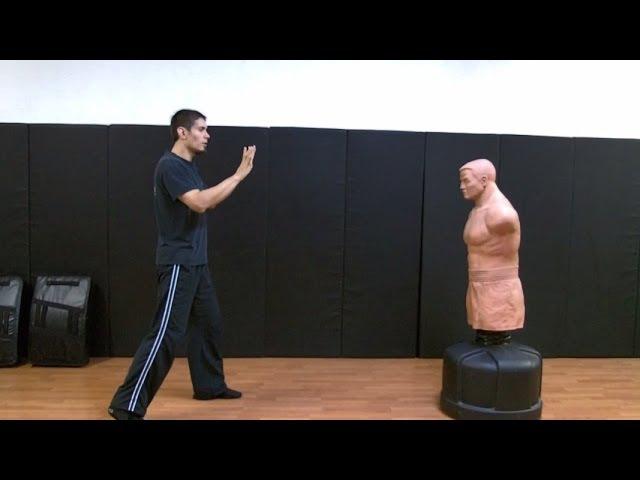Table of Contents
- Understanding the Psychological Impact of Confident Body Posture
- Key Postural Techniques to Project Authority and Prevent Intimidation
- Incorporating Situational Awareness with Effective Body Language
- Practical Exercises to Strengthen Postural Confidence and Presence
- Wrapping Up
Understanding the Psychological Impact of Confident Body Posture
Adopting a confident body posture not only changes how others perceive you but also significantly affects your own psychological state. When you stand tall with your shoulders back, chest open, and chin slightly raised, your brain receives signals of strength and self-assurance, which can elevate your mood and reduce feelings of anxiety. This internal feedback loop enhances your ability to think clearly under pressure and project calmness-two crucial elements in deterring potential threats effectively.
The power of confident body language lies in its subtle but potent cues that communicate dominance and control without uttering a word. Key characteristics include:
- Steady eye contact: conveys conviction and awareness
- Firm stance: roots you firmly, suggesting readiness and resilience
- Controlled gestures: reflect deliberate and thoughtful behavior
Key Postural Techniques to Project Authority and Prevent Intimidation
Establishing a strong presence through your stance is fundamental in conveying confidence without crossing into intimidation. Begin by adopting an open chest posture that signals readiness and openness-stand tall with your shoulders relaxed but pulled slightly back. This alignment not only projects authority but also ensures you appear approachable. Keep your feet shoulder-width apart to create a stable base, which subtly communicates balance and control. Avoid crossing your arms or turning your body away, as these gestures can be perceived as defensive or submissive, undermining your authoritative aura.
Fine-tune your interaction with subtle yet powerful non-verbal cues. Maintain steady, calm eye contact to demonstrate assurance without aggression, and use deliberate, measured movements to support your verbal messages. Incorporate the following techniques to amplify your posture’s effectiveness:
- Rooting: Feel the connection between your feet and the ground, grounding your presence physically and mentally.
- Relaxed Hands: Keep your hands visible and relaxed at your sides or use purposeful gestures to underline key points.
- Micro-lean forward: Leaning slightly forward during conversation conveys engagement without threatening personal space.
Incorporating Situational Awareness with Effective Body Language
Understanding your surroundings is crucial when it comes to projecting confidence and deterring potential threats. Integrating keen situational awareness with your body language allows you to communicate readiness without uttering a word. This means maintaining steady eye contact without staring aggressively, keeping your posture upright yet relaxed, and positioning your body to face potential sources of threat subtly. These non-verbal cues signal alertness and control, often preventing conflict before it escalates.
To enhance this synergy between awareness and body language, consider these effective practices:
- Scan environments regularly, showing that you are vigilant but not paranoid.
- Use purposeful movements to assert space, such as controlled gestures or slight steps that convey confidence.
- Maintain an open stance to avoid appearing defensive but remain ready to act if necessary.
- Mirror the environment’s energy, subtly aligning your demeanor with the setting and people nearby for better influence.
Practical Exercises to Strengthen Postural Confidence and Presence
To build a commanding presence, begin by practicing deliberate and controlled movements that project confidence. Stand tall with your shoulders relaxed but pulled slightly back, allowing your chest to open naturally. Incorporate mirror work into your routine-observe your stance from multiple angles, ensuring your weight is evenly distributed on both feet, and your head remains level. This not only cultivates self-awareness but helps in identifying and correcting subtle slouches or imbalances that can undermine authority. Remember, a grounded posture conveys readiness and resilience, key qualities to discourage unwelcome advances.
In addition to static poses, dynamic exercises are invaluable. Engage in slow, methodical walking drills where each step is purposeful and steady. Practice maintaining eye contact with your reflection or a partner while walking, reinforcing a presence that suggests assertiveness without aggression. Utilize unnumbered lists during your practice sessions to embed good habits, such as:
- Feet hip-width apart: prevents imbalance and projects steadiness
- Chin parallel to the ground: avoids appearing submissive or distracted
- Hands relaxed at sides: signals calm control and approachability
- Breathing steady and deep: supports a calm demeanor under pressure
Mastering these practical exercises ensures your body posture becomes second nature, effectively communicating confidence and discouraging potential threats even before words are exchanged.
Wrapping Up
In mastering your body posture, you’re not just standing taller-you’re projecting confidence and control that can deter potential threats before they even arise. Small adjustments in how you carry yourself can change the way others perceive you, turning vulnerability into strength. By becoming aware of your stance, gestures, and movements, you equip yourself with a powerful, non-verbal tool for personal safety. Remember, effective self-defense starts long before any confrontation-often, it begins with the way you present yourself to the world. Stay mindful, stay confident, and let your posture speak volumes.Check Our Other Blogs
- StunGun – Your Trusted Source for Stun Guns, Laws, and Self-Defense Tips
- PepperSprayLaws – Your Trusted Resource for Pepper Spray Information
- StunGunLaws – Your Trusted Guide to Stun Gun Legality and Safety



